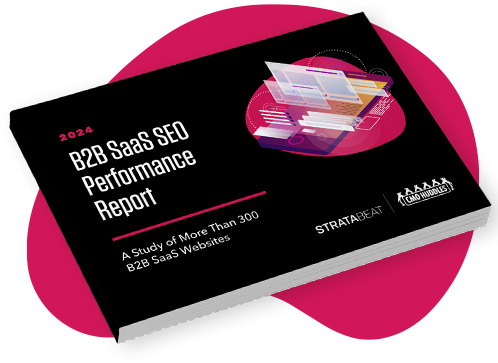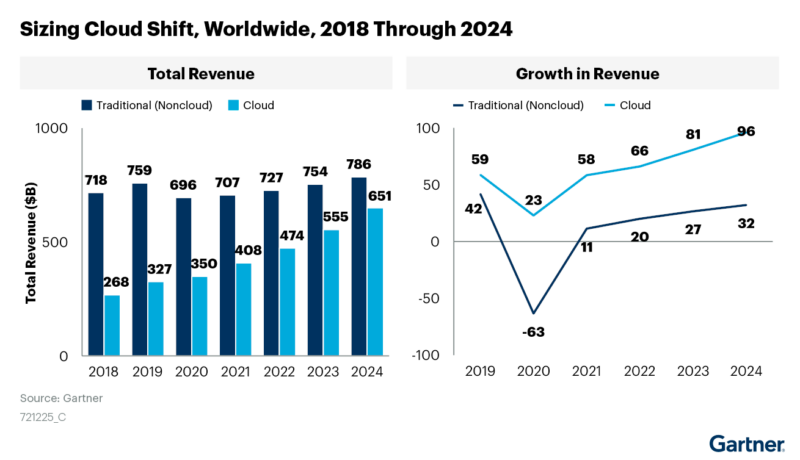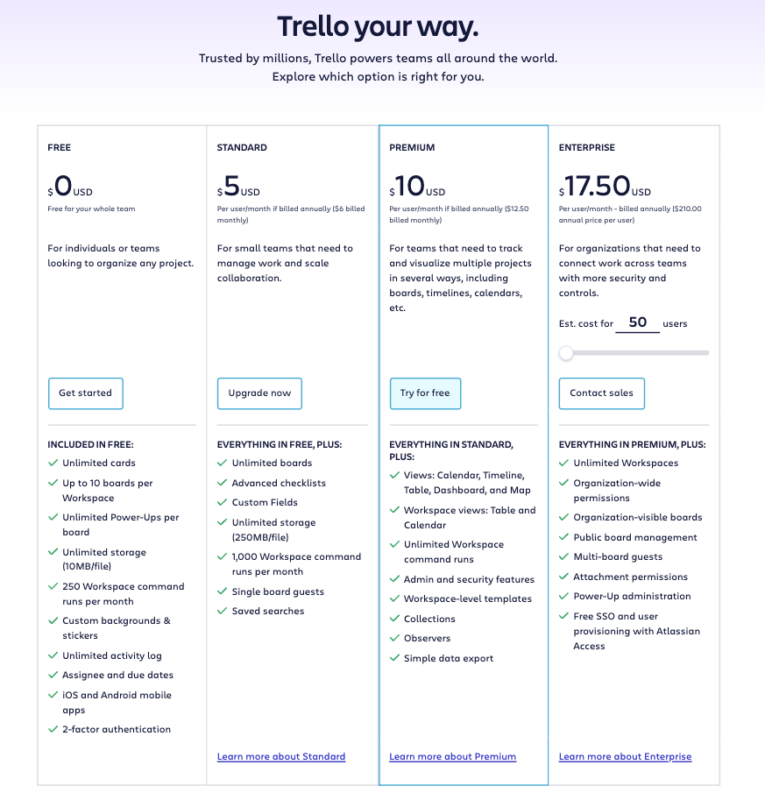A No-BS Guide to B2B SaaS Go-To-Market Strategies

A solid go-to-market plan is non-negotiable. It ensures your product finds its audience, eliminates user problems or frustrations, and delivers solutions that are too good to ignore.
Getting your GTM strategy right can be the difference between being a market leader and ending up as an also-ran. However, articulating your product’s features compared with the diverse needs of businesses and ensuring every pitch and presentation speaks to each stakeholder’s unique concerns is challenging.
This guide walks you through the nuances of creating B2B SaaS GTM strategies that lead to higher conversion rates, increased customer loyalty, and a stronger market presence. We’ll cover what it is, why it’s important, and how to build your strategy, and we’ll share examples for inspiration.
What is a B2B SaaS GTM Strategy?
Components of a B2B SaaS GTM Strategy

Major SEO Trends to Know in 2024
See how to effectively integrate SEO into your GTM strategy this year. Read the PostProduct-Market Fit
Consider product-market fit as your product’s resonance within its intended market segment. It’s where customer feedback shifts from “nice-to-have” to “must-have” features, indicating your solution is indispensable to your users. This fit is critical to drive organic growth through word-of-mouth and reduce the cost of customer acquisition.
It ensures what you offer not only solves a problem but does so in a way that your customers value.
Understanding and reaching product-market fit involves rigorous market research to identify specific customer problems and develop a solution that addresses these issues in a way that is demonstrably better than alternatives.
To evaluate product-market fit, focus on metrics like user engagement, customer satisfaction scores, and growth in organic referrals. High levels of user adoption and advocacy signal a strong product-market fit to guide your strategy toward amplification rather than persuasion.
Achieving this fit requires continuous iteration, using customer feedback to refine your product until it becomes an essential tool for your target market.
Pricing Strategy
A pricing strategy is a systematic approach to setting the cost for a software service to maximize profitability while matching customer value perceptions. It influences purchasing decisions and affects both market penetration and revenue growth. Different pricing models include:
Flat-rate: Offers simplicity with a single price for a full-featured product, appealing to customers seeking straightforward solutions.
Usage-based: Charges based on the volume of use, aligning costs with customer usage levels.
Tiered: Provides different packages with escalating features and prices, catering to diverse customer needs.
Per-user: Prices the product per individual user, scaling with the size of the customer team.
Freemium: Combines free basic features with premium paid options, facilitating product trial and adoption.
Value-based: Sets prices according to the perceived value to the customer, maximizing revenue potential.
Per-feature: Charges based on the specific features a customer chooses to use, offering customization.
Pay-as-you-go: Allows customers to pay for only what they use, ensuring flexibility and scalability
Of course, every business and target segment is unique. Gartner offers a three-step pricing selection process to help you narrow down what works best for your SaaS.
Customer Success and Retention
Customer success and retention include the B2B marketing strategies that ensure your customers achieve their desired outcomes using your product—increasing the likelihood of their continued subscription. Sustained customer satisfaction and loyalty are the lifeblood of recurring revenue models that directly impact your company’s growth and profitability.
- Establish clear success metrics: Define and communicate what success looks like for your customers. Tailor these metrics to individual customer goals to personalize their experience and demonstrate your commitment to their success.
- Implement proactive support: Don’t wait for at-risk customers to come to you with problems. Use customer success tools to track customer health scores, usage patterns, and satisfaction levels to anticipate issues and reach out with solutions before they become aware of them.
- Offer continuous education: Educate customers on how to get the most out of your product through webinars, tutorials, and documentation. Continuous learning opportunities increase product utilization and satisfaction.
- Create a feedback loop: Regularly solicit and act on customer feedback. It shows that you value their input and care about improving the product.
- Foster community engagement: Build an online community where customers share tips, success stories, and best practices. Peer-to-peer advice and networking opportunities increase the perceived value of your product.
- Personalize communication: Tailor your communication based on the customer’s usage patterns, preferences, and history. Personalized interactions strengthen customer relationships and loyalty.
- Recognize and reward loyalty: Implement loyalty programs or customer appreciation initiatives to reward ongoing business and referrals. Recognition increases customer satisfaction and encourages long-term retention.
The average gross retention rate for all SaaS companies in 2023 is 91%.
To ensure SaaS GTM success, be customer-focused. Above all else, make sure your customers achieve their objectives when they use your product.
How to Build Your B2B SaaS GTM Strategy

2025 B2B SaaS SEO Performance Study Released
Unlock superior SEO performance with insights from an analysis of 300 B2B SaaS websites. Read the PostB2B SaaS GTM Strategy Examples
When done correctly, as Thomas Frank demonstrated with Notion, combining product focus with the right influencers can build a true community of advocates around your brand.
Basecamp
Basecamp’s B2B SaaS GTM strategy is a masterclass in clarity, focus, and self-reliance.
Central to its approach is transparent pricing—a welcome change in an industry often criticized for hidden fees and complex tiers.
Basecamp offers two simple, flat-rate pricing models that make it easy for customers to understand what they’re paying for and why it’s worth it.
The platform’s focused offering is another pillar of its strategy. Instead of trying to be all things to all people, Basecamp zeroes in on providing a streamlined project management solution that enhances team productivity and communication.
This clear value proposition resonates with its target audience, who seek efficiency without feature bloat.
Basecamp’s outspoken anti-venture capital (VC) stance distinguishes its brand narrative. By bootstrapping their way to success, they champion a sustainable growth model that prioritizes long-term customer satisfaction over short-term gains.
This philosophy aligns with their market positioning and builds trust and loyalty among users who value transparency and integrity.
Jasper
Jasper is an AI content creation tool that generates high-quality, customizable written and visual content for marketing copy, blog posts, emails, and social media.
It goes the extra mile by nurturing a vibrant community through webinars and tutorials. Where it really stands out though is through its Facebook community where the team and users share use cases every day on how they’re squeezing the most value from the tool.
Jasper’s marketing strategy also addresses the specific challenges its audience faces and highlights them through real-world applications and compelling success stories.
And there’s more—paired with a transparent pricing model, Jasper ensures its value is crystal clear from the get-go.












